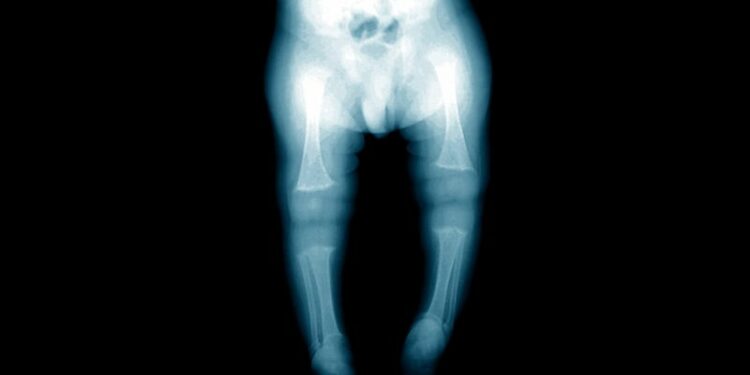[ad_1]
TOPLINE:
Compared with healthy control individuals, patients with X-linked hypophosphataemia (XLH), a rare genetic disorder characterised by low phosphate levels, experienced significant pain and reduced quality of life and mental health.
METHODOLOGY:
- Researchers conducted a cross-sectional study between 2020 and 2022 to evaluate the impact of XLH on quality of life in 49 adult patients (median age, 44.7 years; 69.4% women) and compared them with 42 age- and sex-matched healthy control individuals with no disturbances in calcium, vitamin D, or phosphate homeostasis.
- Inclusion criteria for patients encompassed genetically verified XLH, biochemically verified hypophosphataemia, and/or elevated serum fibroblast growth factor 23 levels with a history of childhood rickets.
- Patient-reported outcome data on pain, quality of life, and mental health (anxiety or depression) were collected using validated questionnaires.
- Pain sensitivity was assessed using pressure algometry, which measured the pressure pain threshold at the sternum, tibia, and skin.
TAKEAWAY:
- Pain intensity scores were significantly higher in patients with XLH than in control individuals (P
- Patients with XLH had significantly lower skin pressure pain thresholds than healthy control individuals (P = .0001), indicating skin hypersensitivity.
- Additionally, patients with XLH had significantly lower quality of life scores (P
- Patients with XLH also showed increased pain catastrophising thinking and an elevated prevalence of anxiety and depressive symptoms.
IN PRACTICE:
“There is a need for a multidisciplinary approach to pain management and an urgent need for the development of clinical guidelines to address pain and mental health in patients living with XLH,” the authors wrote.
SOURCE:
This study was led by Marta Diaz-delCastillo, Department of Forensic Medicine, Aarhus University, Aarhus, Denmark, and was published online on February 19, 2025, in The Journal of Clinical Endocrinology & Metabolism.
LIMITATIONS:
The study had a limited number of participants. Missing items in the questionnaires, particularly in the Brief Pain Inventory–Short Form, may have influenced the accuracy of pain assessment. The patient group showed significant heterogeneity in the XLH phenotype, with phosphate treatment initiated at an age between 0.2 and 49 years, potentially indicating variability in disease aggressiveness.
DISCLOSURES:
This study received support from Kyowa Kirin Services Ltd. and the A.P. Moller and Chastine Mc-Kinney Moller Foundation. The authors declared no conflicts of interest.
This article was created using several editorial tools, including AI, as part of the process. Human editors reviewed this content before publication.
[ad_2]
Source link : https://www.medscape.com/viewarticle/pain-and-poor-life-quality-x-linked-hypophosphataemia-2025a10004jf?src=rss
Author :
Publish date : 2025-02-25 12:00:00
Copyright for syndicated content belongs to the linked Source.














